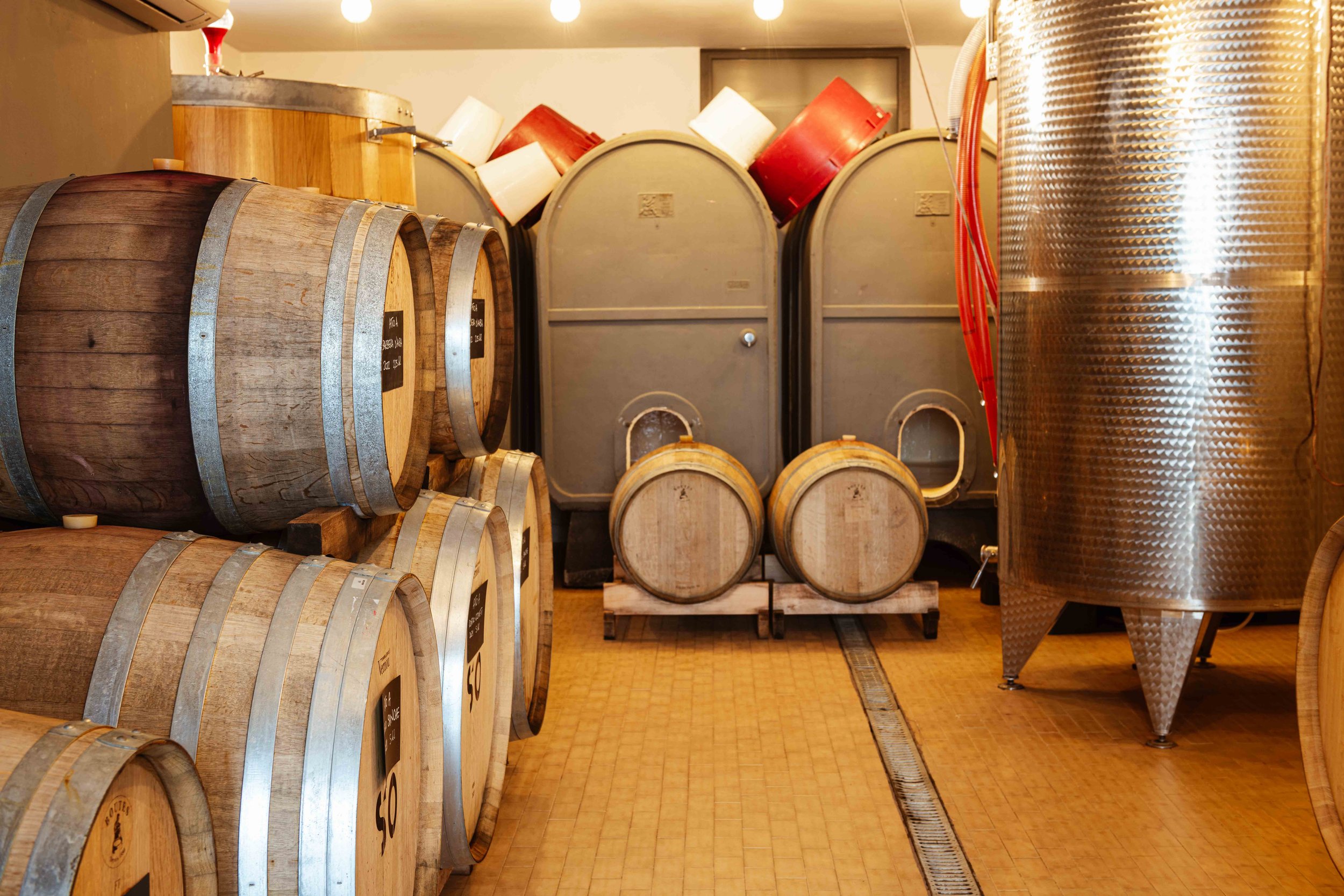








stefano occhetti
Who: Stefano Occhetti and his wife Giulia, plus Nonno Meco and Roberto the consulting oenologist.
Where: Monteu Roero, Piedmont, Italy
What grapes: Nebbiolo, Arneis
How many bottles: 12,000
Key facts: A new small family estate (since 2019) started by a son of Occhetti frazione, on Monteu Roero.
Website: https://stefanoocchetti.com
Instagram: https://www.instagram.com/stefano_occhetti?igsh=MXR0OHdsNHhyNm1xdw==
Stefano Occhetti Roero Arneis
Viticulture: Regenerative agriculture. Organic in the vineyard. No herbicides. Cover crops are planted, and cut in the spring.
Soil type: Sand with some clay
Elevation: 260m
Grapes: Arneis
Method of fermentation: All natural yeast. Pied a cuve. Low intervention in cellar. Fined with bentonite. Coarse paper filtration.
Bottles made: 2,000
Warm golden color. Some beeswax, and charming orchard fruit aromas. This wine is very expressive given its youth. Medium-weight. Really delightful, and significantly different in style from other tasty Arneis I’ve encountered in NC. Some lees contact/battonage. What a treat! The attention may reside with Occhetti’s ambitious reds, but I’m wondering who long it’ll be before this white wine is spoken of as one of the region’s finest.
Stefano Occhetti Langhe Nebbiolo
Viticulture: Regenerative agriculture. Organic in the vineyard. No herbicides. Cover crops are planted, and cut in the spring.
Soil type: Sand with some clay
Elevation: 280m
Grapes: Nebbiolo
Method of fermentation: All natural yeast. Pied a cuve. Low intervention in cellar. Fermented in concrete. Malolactic fermentation in barrel. Fined with bentonite. Coarse paper filtration. Low sulfite: 55mg/liter.
Bottles made: 5,000
I met Stefano at a restaurant in Norfolk in March, to taste the wines for a second time. We are sold on the idea of importing his wines, but it never hurts to circle back and take a second look. This wine smelled so good! Red fruit and roses. Lots of kirsch notes. On the palate it has/had significant dry tannin. This wine is a mix of fruit from all of Stefano’s vineyards. Stefano and his consulting oenologist Roberto ferment it in concrete, then assemble the wine for malolactic fermentation in wood barrel. (JM)
Stefano Occhetti “Sanche” Roero
Viticulture: Regenerative agriculture. Organic in the vineyard. No herbicides. Cover crops are planted, and cut in the spring.
Soil type: Sand with some clay
Elevation: 300m
Grapes: Nebbiolo
Method of fermentation: All natural yeast. Pied a cuve. Low intervention in cellar. Vinified in wood. Sixteen months of aging in tonneau. Low sulfite: 70mg/liter. Unfiltered. Sanche achieves natural stability through aging.
Bottles made: 2,000
Sanche is a steep two-hectare cru of 70-year-old vines. It’s the heart of this farm. The field has to be worked by hand. No tractor could safely traverse it. Tasted in December, and then again in March, the wine exhibited greater complexity than the Langhe Nebbiolo. Bitter chocolate and baking spices, followed by layers of soft fruit. It’s exceptionally well-made. Stefano and his consulting oenologist Roberto vinify it wood. Malolactic fermentation happens in tonneaux, where Sanche rests for 16 months before bottling.
It’s a new(ish) estate. In 2016, Stefano Ochetti returned home. To frazione Ochetti, a hamlet on Monteu Roero where his father and grandfather were born. Stefano wasn’t taking over a family winery, though ancestors had been farmers. He inherited a half hectare from his grandfather, and was able to purchase just over a hectare of additional vines. 2019 was Occhetti’s first vintage.
Stefano’s wife Giulia recently joined the winery’s small team. Nonno Meco and Roberto (the oenologist) are the other employees. Stefano and Giulia have two young children. The farm is in the center of Roero. At first, they made 4,000 bottles per vintage, and sold primarily via Instagram. Ninety percent went to restaurants. The farm has ballooned in a few short years to a massive four hectares, and (potentially) 15,000 bottles per year, though weather seems to consistently knock down that total. When we spoke in December, Stefano had bottled about 5,000 Langhe Nebbiolo, 2,000 Sanche Roero (a steep cru, his finest wine) and 2,000 Arneis. A Barbera is also made. Great growth from 2019, but not the totals they aspire to make.



